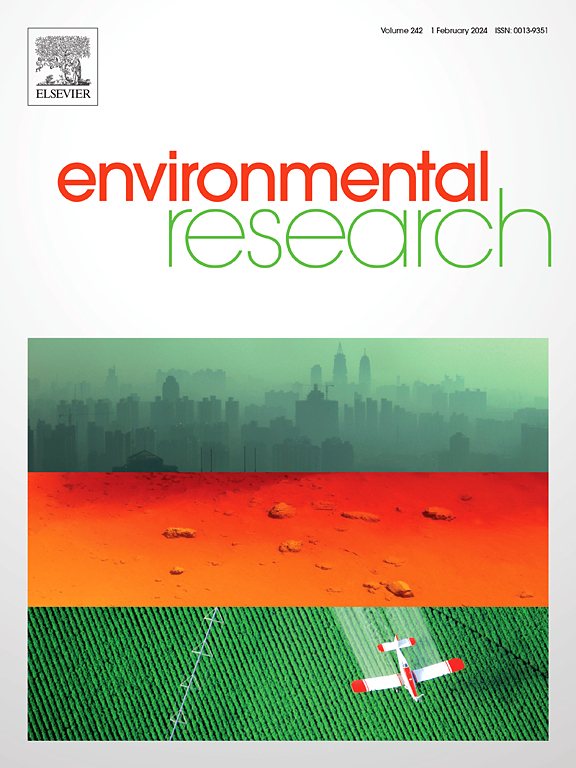MOF-derived Cu@Cu2O nanoclusters for photothermally enhanced Fenton-like catalytic degradation of dye pollutants
IF 7.7
2区 环境科学与生态学
Q1 ENVIRONMENTAL SCIENCES
引用次数: 0
Abstract
This paper presents a synthesis method for a novel octahedral Cu@Cu2O nanocluster (NAs), which is prepared by calcining Cu-BTC (metal-organic framework, 1,3,5-benzenetricarboxylate) in air, resulting in a porous carbon structure. The obtained Cu@Cu2O nanoclusters exhibit heterogeneous interfaces between Cu and Cu2O, significantly enhancing their Fenton-like catalysis and photothermal properties. Using SEM, TEM, XPS, and XRD techniques, the Cu@Cu2O NAs were comprehensively characterized. Upon near-infrared irradiation, these nanoclusters rapidly heat to 45 °C, generating reactive oxygen species (•OH) that effectively catalyze the degradation of Rhodamine B (RhB) dye. Moreover, cellular and animal experiments demonstrated that Cu@Cu2O NAs possess good biocompatibility and exhibit excellent biological safety. Overall, this study offers a promising and biocompatible material option for environmental remediation, integrating Fenton-like reactions with photothermal effects.

求助全文
约1分钟内获得全文
求助全文
来源期刊

Environmental Research
环境科学-公共卫生、环境卫生与职业卫生
CiteScore
12.60
自引率
8.40%
发文量
2480
审稿时长
4.7 months
期刊介绍:
The Environmental Research journal presents a broad range of interdisciplinary research, focused on addressing worldwide environmental concerns and featuring innovative findings. Our publication strives to explore relevant anthropogenic issues across various environmental sectors, showcasing practical applications in real-life settings.
 求助内容:
求助内容: 应助结果提醒方式:
应助结果提醒方式:


